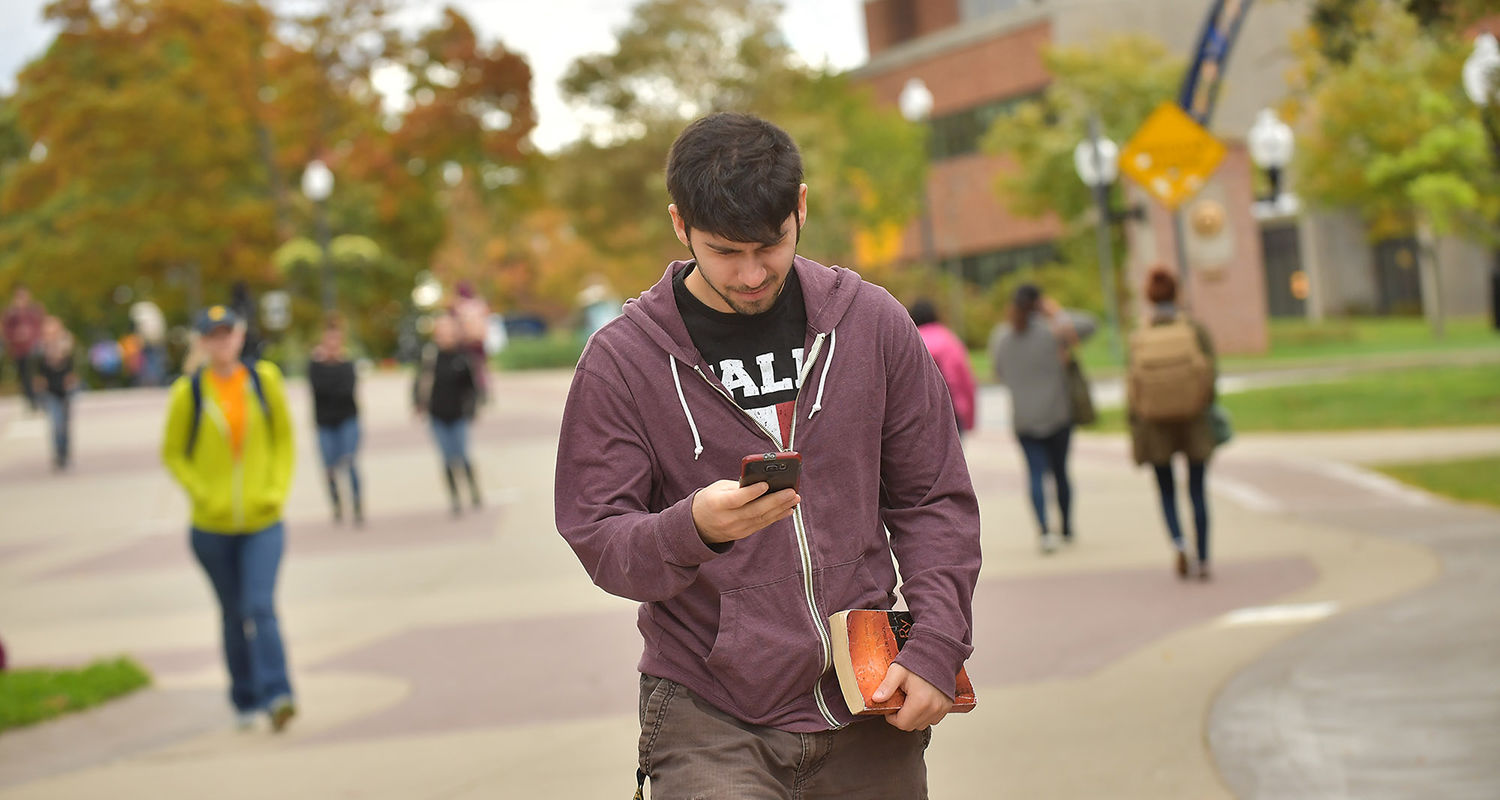We all know that we are supposed to exercise to reduce the risk of heart disease. But let’s face it, sometimes the only workout we get is walking from our office to the breakroom, and to the parking lot to drive home. So how then do we get the most out of those short walks? 91˛Öżâ researchers suggest putting the cellphone away – doing that could help you pick up the pace.
Jacob Barkley, Ph.D., and Andrew Lepp, Ph.D., from 91˛Öżâ’s College of Education, Health and Human Services anonymously observed and timed more than 1,000 pedestrians walking alone across a 50-meter stretch of walkway on campus. They put the walkers into three categories – texting, talking and not using the phone. Pedestrians who used their cellphones for only a portion of the observed distance were not included in the study.
Results show that 20 percent of the pedestrians used their cellphones constantly while walking the entire measured distance. The pedestrians who were texting on their cellphones walked 7.4 percent more slowly, and those who were talking on their cellphones walked 11.3 percent more slowly than pedestrians without a cellphone. Researchers found these differences statistically significant, considering that increased walking speed has been shown to increase cardiovascular fitness.
“For many people, walking is the only physical activity they participate in,” Barkley says. “For such individuals, the importance of walking is great. Using a cellphone during walking may sabotage the benefits of this behavior.”
This result supports from Barkley and Lepp that talking or texting on a cellphone while walking on a treadmill also reduces walking speed. Taken together, these results suggest that talking or texting on a cellphone while walking reduces walking speed whether that use takes place on a treadmill, in a gym or outside on a walkway. Because walking behavior, especially walking speed, helps reduce the risk of heart disease, the study suggests limiting cellphone use while walking in an effort to maximize the health benefits of the exercise.
The study is published in the journal .
Learn more about 91˛Öżâ’s College of Education, Health and Human Services.








